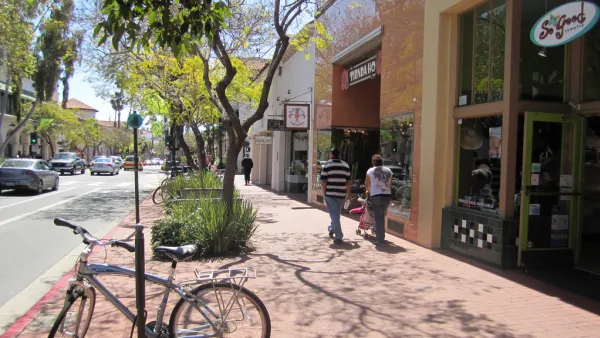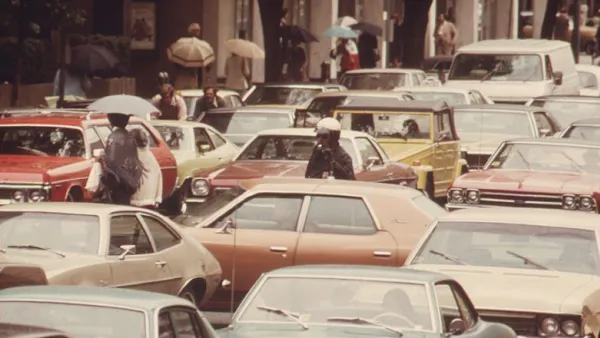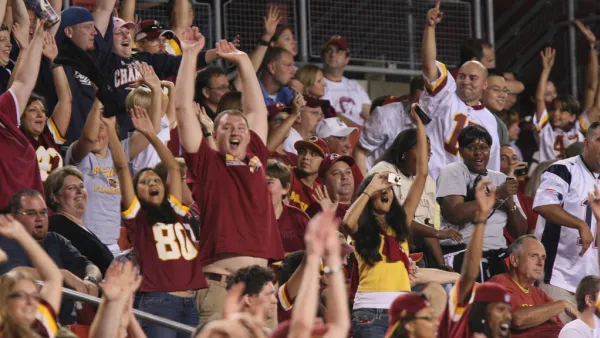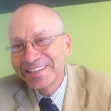Social / Demographics
Inaccessible Transit Turns NYC Into a Tribulation
In a short film for The New York Times, Jason DaSilva documents how New York's famed public transit system, which serves millions of riders every day, fails the city's disabled residents.
Imminent Doom as Grand Strategy
What do three-pack-a-day smoking habits, triple-decker cheese burgers and sprawl have in common? They all offer immediate gratification and deferred consequences. But now the bill's coming due. Ben Brown lays out some ways to face the music.

How Walkable Communities are Key to Modern Geopolitics
The "great global project" of this century, says Patrick Doherty, is how to "accommodate 3 billion additional middle-class aspirants in two short decades." In a bold essay, he outlines how the U.S. must lead the global transition to sustainability.
Largest Gathering in History Attracts Researchers
When the Kumbh Mela, a 48-day Hindu festival held every four years, starts this week in northern India it will be the largest gathering in history. Researchers are using the opportunity to study the formation and inner-workings of a pop-up mega city.
How Can Bike Share Better Serve Those Who Could Benefit the Most?
Across the United States, bike-share systems have struggled to provide access to those with fewer transportation options. Darren Buck looks at what some cities are doing to expand their reach.
Developer Dreams of Turning Detroit Park Into Free Market Utopia
A suburban Detroit developer is promoting an alternative vision for Detroit's Belle Isle: transforming the island park into a commonwealth free market utopia for the elite.
How Important is the Neighborhood Effect?
Social scientists have a theory that a neighborhood's character shapes its economic future more than income levels and foreclosure rates. A tragedy to the community of Chatham on Chicago's South Side has tested this "neighborhood effect."
Good Urban Parks and Our Wellbeing
Broadening our definition of parks to recognize their role in preventative health care and promotion will only expand our awareness on how important they are to good neighbourhood design.

An Astounding Explanation for Why Big Cities Are More Dangerous Than Small Ones
For decades, researchers have hunted for an explanation for why big cities have been more prone to violent crime than small ones. A new hypothesis may offer a surprising answer, and prove that big cities aren't inherently much more dangerous.
Move Over iPad, the Digital Globe Has Arrived
Can dynamic digital globes compete with flatter technologies like today’s iPad? Mark Vanhoenacker explores some of the possibilities these modern spheres may bring to places of work, study and play.
Private Shuttle is Newest Luxury Amenity for NYC Renters
Hampton Court, a luxury apartment bldg in Manhattan, had two challenges to overcome in attracting tenants - being located in East Harlem and its distance from the Lexington Ave. subway line. An 'amenity' - a shuttle to the subway - proved the answer.
Get to Know Your Neighborhood
A new app from the nonprofit Sunlight Foundation culls publicly available information to give you a graphically pleasing "cultural and demographic snapshot of your surroundings," writes Ariel Schwartz.
Utilities React to Reduction in Electricity Consumption
In her news article and blog, Rebecca Smith examines the reduction in electricity consumption in the U.S. - the causes and how utilities have reacted to remain profitable.
Neighborhood Form and Extreme Weather Events
Adapting to extreme weather events resulting from climate change has largely taken the form of infrastructure engineering, e.g building flood doors for subways or reinforcing sand dunes, but what of 'social adaptation' for residents themselves?

Football Friday: America's Most Fanatical Cities
With college bowl season well underway (and reaching its climax on Monday) and the NFL playoffs starting this weekend, football fever is sweeping America. Richard Florida looks at which cities can boast the most rabid fan bases.
Census Bureau Ponders the Changing Definitions of Race in America
The Census Bureau may revise questions about race and ethnicity on the 2020 survey to improve the accuracy of data on minority groups. Recent data shows a difference between how the government identifies such groups and how they identify themselves.
Placemaking Wishes for 2013
Like a lot of people, Placeshakers is kicking off the new year with a list: placemaking wishes for 2013. Read on for seven trending ideas they hope break large.
Non-White Gentrification Changes a Neighborhood, But Not Its Perception
Chicago's Bronzeville neighborhood has seen a dramatic rise in incomes and property values over the past decade. Emily Badger examines the historically black neighborhood's non-white gentrification, and how it's viewed differently than other areas.
Is Safety on Public Transit Just an Indian Problem?
The case of a fatal bus rape in India, and subsequent protests, has captivated the world. But, argues Sarah Goodyear, the incident should serve as a larger reminder of the threat of violence and harassment towards women on transit systems worldwide.
Resolving to View City Planning as ‘Preventative Medicine'
Jason Corburn issues an indictment of the "community malpractice" by policy-makers that's led to America's glaring health inequalities, and argues that 2013 must be the year that planning works towards improving the living conditions of the poor.
Pagination
Urban Design for Planners 1: Software Tools
This six-course series explores essential urban design concepts using open source software and equips planners with the tools they need to participate fully in the urban design process.
Planning for Universal Design
Learn the tools for implementing Universal Design in planning regulations.
EMC Planning Group, Inc.
Planetizen
Planetizen
Mpact (formerly Rail~Volution)
Great Falls Development Authority, Inc.
HUDs Office of Policy Development and Research
NYU Wagner Graduate School of Public Service


































